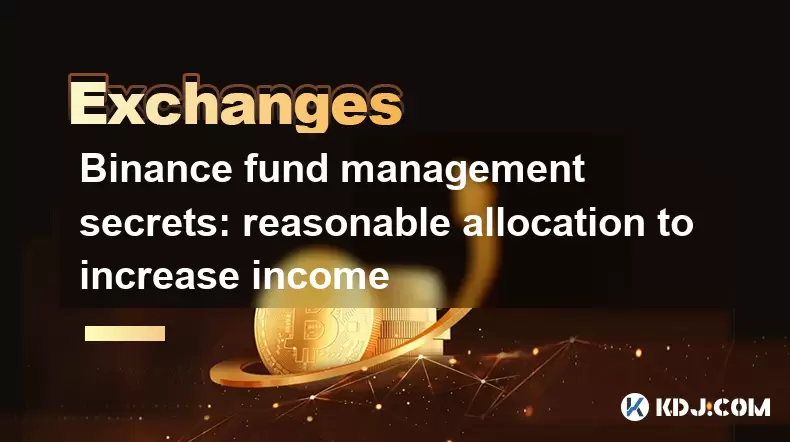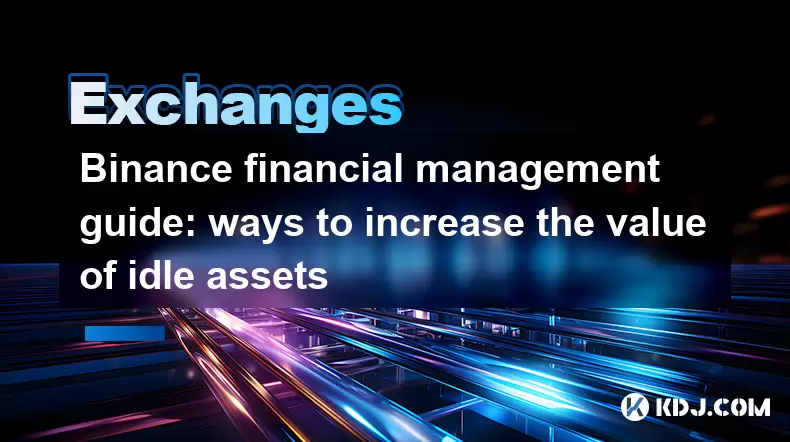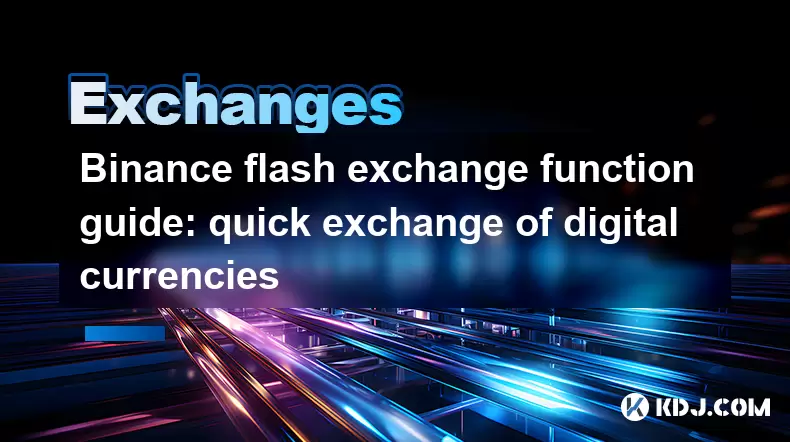-
 Bitcoin
Bitcoin $107,443.3008
-1.17% -
 Ethereum
Ethereum $2,494.2503
-0.63% -
 Tether USDt
Tether USDt $1.0003
0.00% -
 XRP
XRP $2.2496
2.23% -
 BNB
BNB $658.7569
0.63% -
 Solana
Solana $154.9826
1.94% -
 USDC
USDC $1.0000
0.01% -
 TRON
TRON $0.2799
1.07% -
 Dogecoin
Dogecoin $0.1659
-1.78% -
 Cardano
Cardano $0.5745
0.25% -
 Hyperliquid
Hyperliquid $39.7005
0.13% -
 Bitcoin Cash
Bitcoin Cash $519.5989
3.78% -
 Sui
Sui $2.7874
-2.40% -
 Chainlink
Chainlink $13.3762
-1.69% -
 UNUS SED LEO
UNUS SED LEO $9.0784
-0.64% -
 Avalanche
Avalanche $17.9846
-2.81% -
 Stellar
Stellar $0.2390
-0.06% -
 Toncoin
Toncoin $2.9028
0.25% -
 Shiba Inu
Shiba Inu $0.0...01147
-2.17% -
 Litecoin
Litecoin $86.6956
-1.27% -
 Hedera
Hedera $0.1508
-0.50% -
 Monero
Monero $322.6222
3.26% -
 Polkadot
Polkadot $3.4124
-2.99% -
 Dai
Dai $0.9999
0.00% -
 Bitget Token
Bitget Token $4.5434
-1.97% -
 Ethena USDe
Ethena USDe $1.0002
0.00% -
 Uniswap
Uniswap $7.1562
-2.61% -
 Aave
Aave $275.8830
-1.02% -
 Pepe
Pepe $0.0...09790
-4.04% -
 Pi
Pi $0.5018
-5.09%
How to Easily Trade Cryptocurrencies on Coinbase?
Coinbase offers a user-friendly platform for trading cryptocurrencies like Bitcoin and Ethereum, with features for both beginners and advanced traders on Coinbase Pro.
Apr 05, 2025 at 10:22 am

Trading cryptocurrencies has become increasingly popular, and Coinbase is one of the leading platforms for beginners and experienced traders alike. This article will guide you through the process of easily trading cryptocurrencies on Coinbase, covering everything from setting up your account to executing your first trade. Whether you're looking to invest in Bitcoin, Ethereum, or any other digital asset, Coinbase offers a user-friendly interface and a wide range of trading options to help you achieve your financial goals.
Getting Started with Coinbase
To begin trading on Coinbase, you first need to create an account. Visit the Coinbase website and click on the "Sign Up" button. You'll be prompted to enter your email address, create a password, and provide some basic personal information. Once you've completed the registration process, you'll need to verify your email address and phone number. This is a crucial step to ensure the security of your account and to comply with regulatory requirements.
After verifying your contact information, you'll need to complete the identity verification process. Coinbase requires users to submit a government-issued ID, such as a driver's license or passport, to comply with Know Your Customer (KYC) regulations. This process may take a few minutes to a few days, depending on the volume of verification requests. Once your identity is verified, you'll have full access to Coinbase's trading features.
Funding Your Coinbase Account
Before you can start trading, you need to fund your Coinbase account. Coinbase supports a variety of payment methods, including bank transfers, credit/debit cards, and even PayPal in some regions. To add funds, navigate to the "Accounts" tab and select the "Deposit" option. Choose your preferred payment method and follow the on-screen instructions to complete the transaction.
When using a bank transfer, it may take a few business days for the funds to appear in your Coinbase account. Credit/debit card transactions are typically processed instantly, but they may incur higher fees. Once your funds are available, you can use them to purchase cryptocurrencies directly or transfer them to your Coinbase Pro account for more advanced trading options.
Understanding Coinbase's Trading Interface
Coinbase offers a simple and intuitive trading interface that's perfect for beginners. When you're ready to make your first trade, navigate to the "Trade" tab. Here, you'll see a list of available cryptocurrencies, along with their current prices and trading volumes. To buy or sell a cryptocurrency, simply select the asset you're interested in and enter the amount you want to trade.
Coinbase also provides a "Buy/Sell" feature that allows you to quickly purchase or sell cryptocurrencies at the current market price. This is ideal for those who want to execute trades quickly without worrying about setting specific price levels. For more advanced traders, Coinbase Pro offers additional features like limit orders, stop orders, and advanced charting tools.
Executing Your First Trade on Coinbase
To execute your first trade on Coinbase, follow these steps:
- Select the cryptocurrency you want to trade from the list of available assets.
- Choose whether you want to buy or sell the cryptocurrency.
- Enter the amount you want to trade, either in your local currency or in the cryptocurrency itself.
- Review the transaction details, including the total cost and any applicable fees.
- Confirm the trade and wait for it to be processed.
Once your trade is executed, the cryptocurrencies will be added to or removed from your Coinbase wallet. You can view your transaction history and current balances by navigating to the "Accounts" tab. From here, you can also initiate withdrawals to transfer your funds back to your bank account or to another cryptocurrency wallet.
Advanced Trading Options on Coinbase Pro
For those looking for more advanced trading options, Coinbase Pro is the perfect solution. Coinbase Pro offers a more sophisticated trading interface with features like limit orders, stop orders, and advanced charting tools. To access Coinbase Pro, simply log in to your Coinbase account and navigate to the "Pro" tab.
On Coinbase Pro, you can set specific price levels for your trades using limit orders. This allows you to buy or sell cryptocurrencies at a predetermined price, potentially saving you money on fees and maximizing your profits. Stop orders, on the other hand, allow you to automatically execute a trade when the market reaches a certain price level, helping you manage risk and protect your investments.
Managing Your Cryptocurrency Portfolio
As you continue to trade on Coinbase, it's important to regularly monitor and manage your cryptocurrency portfolio. Coinbase provides a range of tools to help you track your investments, including real-time price charts, portfolio performance metrics, and customizable alerts. You can access these features by navigating to the "Portfolio" tab on the Coinbase website or mobile app.
To diversify your portfolio and minimize risk, consider investing in a variety of cryptocurrencies. Coinbase offers a wide range of digital assets, from established coins like Bitcoin and Ethereum to newer altcoins with high growth potential. By spreading your investments across multiple assets, you can potentially increase your returns while reducing your exposure to market volatility.
Staying Safe and Secure on Coinbase
Security is a top priority when trading cryptocurrencies, and Coinbase takes several measures to protect your account and funds. To keep your account safe, enable two-factor authentication (2FA) and use a strong, unique password. Coinbase also offers a vault feature that allows you to store your cryptocurrencies in a secure, time-locked wallet, adding an extra layer of protection against unauthorized access.
In addition to account security, it's important to be aware of common scams and phishing attempts in the cryptocurrency space. Never share your private keys or login credentials with anyone, and be cautious of unsolicited emails or messages asking for personal information. By staying vigilant and following best practices, you can trade cryptocurrencies on Coinbase with confidence and peace of mind.
Common Questions About Trading on Coinbase
Q: Is Coinbase safe to use for trading cryptocurrencies?
A: Yes, Coinbase is considered a safe and reputable platform for trading cryptocurrencies. The company employs industry-standard security measures, including two-factor authentication, encryption, and cold storage for the majority of user funds. However, it's important for users to take their own precautions, such as using strong passwords and enabling additional security features.
Q: What fees does Coinbase charge for trading?
A: Coinbase charges different fees depending on the type of transaction and payment method used. For basic trades, Coinbase typically charges a spread of around 0.5% above or below the market price. Additionally, there may be fees for depositing or withdrawing funds, as well as for using certain payment methods like credit/debit cards. It's important to review Coinbase's fee schedule before making trades to understand the total cost.
Q: Can I trade cryptocurrencies other than Bitcoin and Ethereum on Coinbase?
A: Yes, Coinbase supports a wide range of cryptocurrencies beyond Bitcoin and Ethereum. Some of the other popular digital assets available on the platform include Litecoin, Bitcoin Cash, and various stablecoins like USD Coin (USDC). Coinbase regularly adds new cryptocurrencies to its platform, so the selection may expand over time.
Q: How long does it take to buy or sell cryptocurrencies on Coinbase?
A: The time it takes to buy or sell cryptocurrencies on Coinbase can vary depending on several factors, including the payment method used and the current market conditions. For instant purchases using a credit/debit card, the transaction is typically processed within minutes. Bank transfers may take a few business days to complete. Selling cryptocurrencies and withdrawing funds to a bank account can also take a few days, depending on the processing times of the financial institutions involved.
Q: Can I use Coinbase Pro for more advanced trading strategies?
A: Yes, Coinbase Pro is designed for more advanced traders and offers a range of features not available on the standard Coinbase platform. These include limit orders, stop orders, and advanced charting tools that allow for more sophisticated trading strategies. Coinbase Pro also typically offers lower fees compared to the basic Coinbase platform, making it an attractive option for active traders looking to minimize costs.
Disclaimer:info@kdj.com
The information provided is not trading advice. kdj.com does not assume any responsibility for any investments made based on the information provided in this article. Cryptocurrencies are highly volatile and it is highly recommended that you invest with caution after thorough research!
If you believe that the content used on this website infringes your copyright, please contact us immediately (info@kdj.com) and we will delete it promptly.
- North Korea's Cyber Plot: Funding Weapons Development Through Virtual Heists
- 2025-07-01 10:30:12
- Undervalued Crypto Tokens: Compute Tokens Stealing the Show?
- 2025-07-01 10:50:12
- XRPL EVM Sidechain: Unleashing Smart Contracts and Cross-Chain DeFi on XRP
- 2025-07-01 10:30:12
- Archaeology Unearths Ancient Coin Moulds: A Glimpse into Indo-Greek Trade in Gujarat
- 2025-07-01 10:50:12
- MAGACOIN FINANCE: Altcoin Returns & the Early Adoption Advantage
- 2025-07-01 11:10:12
- Neo Pepe: Is This Presale the Crypto Opportunity You've Been Waiting For?
- 2025-07-01 11:10:12
Related knowledge

Binance spot market analysis: seize the best time to buy and sell
Jun 19,2025 at 04:56pm
Understanding the Binance Spot MarketThe Binance spot market is one of the most popular platforms for cryptocurrency trading globally. It allows users to trade digital assets at current market prices, making it essential for traders aiming to buy low and sell high. Unlike futures or margin trading, spot trading involves direct ownership of the asset aft...

Binance fund management secrets: reasonable allocation to increase income
Jun 22,2025 at 02:29pm
Understanding Binance Fund ManagementBinance fund management involves strategic allocation of your cryptocurrency assets to optimize returns while managing risk. The key to successful fund management lies in understanding how different investment options on the Binance platform can be utilized to create a diversified portfolio. This includes spot tradin...

Binance trading pair selection skills: find the best buying and selling combination
Jun 23,2025 at 02:49am
Understanding the Basics of Trading Pairs on BinanceBefore diving into trading pair selection skills, it's essential to understand what a trading pair is. On Binance, a trading pair refers to two cryptocurrencies that can be traded against each other. For example, BTC/USDT means Bitcoin is being traded against Tether. Each trading pair has its own liqui...

Binance new coin mining strategy: participate in Launchpool to earn income
Jun 23,2025 at 11:56am
What is Binance Launchpool and how does it work?Binance Launchpool is a feature introduced by the world’s largest cryptocurrency exchange, Binance, to allow users to earn new tokens through staking. This platform enables users to stake their existing cryptocurrencies (such as BNB, BUSD, or other supported assets) in exchange for newly launched tokens. T...

Binance financial management guide: ways to increase the value of idle assets
Jun 19,2025 at 11:22pm
Understanding Idle Assets in the Cryptocurrency SpaceIn the fast-paced world of cryptocurrency, idle assets refer to digital currencies that are not actively being used for trading, staking, or yield farming. Holding these funds in a wallet without utilizing them means missing out on potential growth opportunities. Binance, as one of the leading platfor...

Binance flash exchange function guide: quick exchange of digital currencies
Jun 23,2025 at 12:29pm
What is the Binance Flash Exchange Function?The Binance Flash Exchange function is a powerful tool designed to allow users to instantly swap between supported cryptocurrencies without the need for placing traditional buy/sell orders. This feature simplifies the trading process by offering a direct exchange mechanism, eliminating the requirement to conve...

Binance spot market analysis: seize the best time to buy and sell
Jun 19,2025 at 04:56pm
Understanding the Binance Spot MarketThe Binance spot market is one of the most popular platforms for cryptocurrency trading globally. It allows users to trade digital assets at current market prices, making it essential for traders aiming to buy low and sell high. Unlike futures or margin trading, spot trading involves direct ownership of the asset aft...

Binance fund management secrets: reasonable allocation to increase income
Jun 22,2025 at 02:29pm
Understanding Binance Fund ManagementBinance fund management involves strategic allocation of your cryptocurrency assets to optimize returns while managing risk. The key to successful fund management lies in understanding how different investment options on the Binance platform can be utilized to create a diversified portfolio. This includes spot tradin...

Binance trading pair selection skills: find the best buying and selling combination
Jun 23,2025 at 02:49am
Understanding the Basics of Trading Pairs on BinanceBefore diving into trading pair selection skills, it's essential to understand what a trading pair is. On Binance, a trading pair refers to two cryptocurrencies that can be traded against each other. For example, BTC/USDT means Bitcoin is being traded against Tether. Each trading pair has its own liqui...

Binance new coin mining strategy: participate in Launchpool to earn income
Jun 23,2025 at 11:56am
What is Binance Launchpool and how does it work?Binance Launchpool is a feature introduced by the world’s largest cryptocurrency exchange, Binance, to allow users to earn new tokens through staking. This platform enables users to stake their existing cryptocurrencies (such as BNB, BUSD, or other supported assets) in exchange for newly launched tokens. T...

Binance financial management guide: ways to increase the value of idle assets
Jun 19,2025 at 11:22pm
Understanding Idle Assets in the Cryptocurrency SpaceIn the fast-paced world of cryptocurrency, idle assets refer to digital currencies that are not actively being used for trading, staking, or yield farming. Holding these funds in a wallet without utilizing them means missing out on potential growth opportunities. Binance, as one of the leading platfor...

Binance flash exchange function guide: quick exchange of digital currencies
Jun 23,2025 at 12:29pm
What is the Binance Flash Exchange Function?The Binance Flash Exchange function is a powerful tool designed to allow users to instantly swap between supported cryptocurrencies without the need for placing traditional buy/sell orders. This feature simplifies the trading process by offering a direct exchange mechanism, eliminating the requirement to conve...
See all articles

























































































